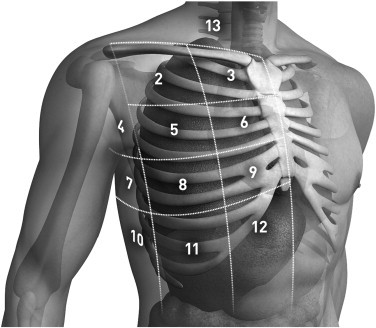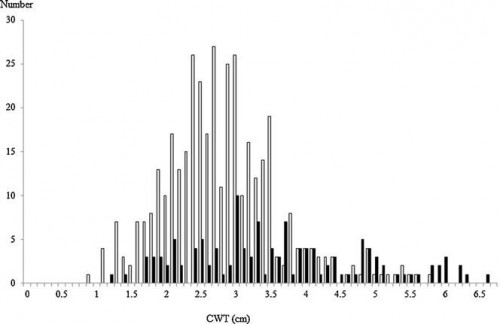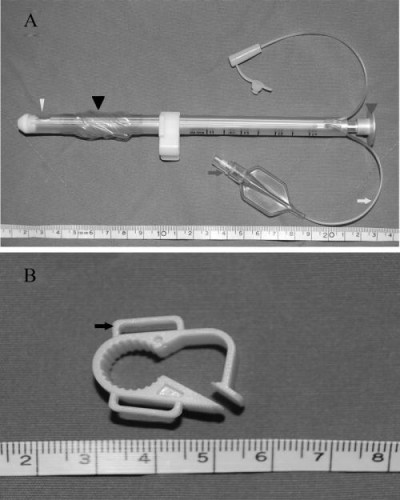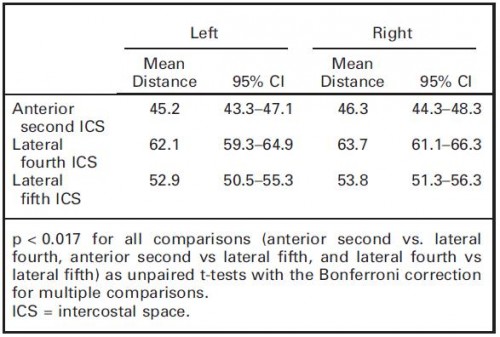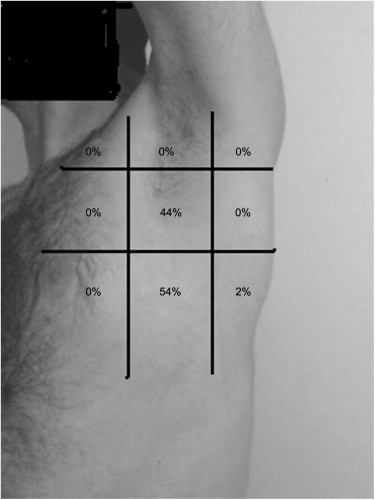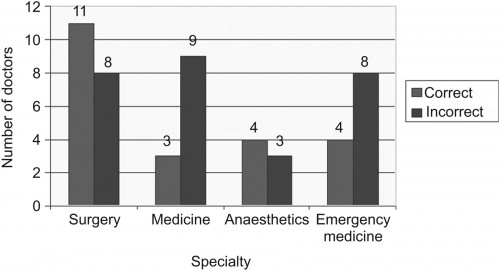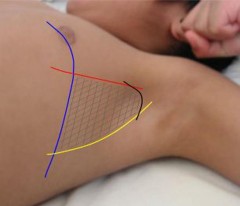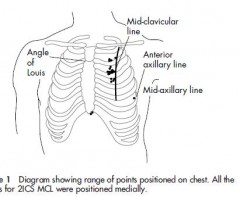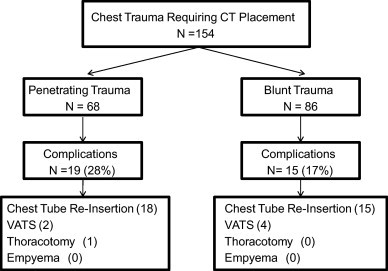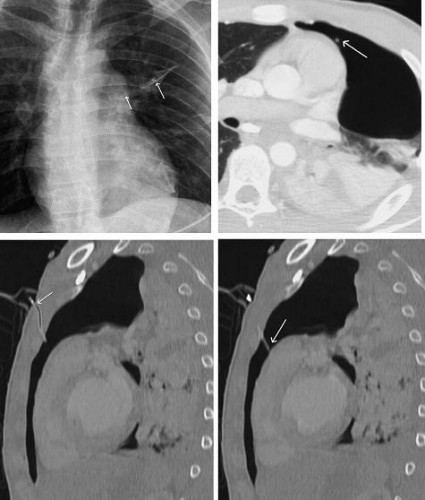L'exsufflation à l'aiguille est aussi efficace que le drainage thoracique pour assurer la survie.
Lecture 1 Lecture 2
Prehosp Emerg Care. 2009 Jan-Mar;13(1):18-27.
Needle versus tube thoracostomy in a swine model of traumatic tension hemopneumothorax.
Holcomb JB, McManus JG, Kerr ST, Pusateri AE.
U.S. Army Institute of Surgical Research, Fort Sam Houston, Texas 78234, USA. john.holcomb@amedd.army.mil
Abstract
OBJECTIVE: Traumatic tension hemopneumothorax is fatal if not treated rapidly. However, whether prehospital decompression is better achieved by chest tube or needle thoracostomy is unknown. We conducted this study to compare the immediate results and prolonged effectiveness of two methods of treatment for traumatic tension hemopneumothorax in a swine model.
METHODS: Ten percent of calculated total blood volume was instilled into the hemithorax of spontaneously ventilating swine (n = 5 per group, 40 +/- 3 kg). A Veres needle and insufflator were used to induce tension hemopneumothorax. Animals were randomized to one of four groups: 1) needle thoracostomy with 14-gauge intravenous catheter; 2) needle thoracostomy with Cook catheter; 3) 32-F chest tube thoracostomy; or 4) no intervention (control). Serial chest x-rays were obtained to document mediastinal shift before and after treatment. Arterial blood gas values and physiologic data were recorded. Postoperatively, thoracoscopy was performed to detect possible pulmonary injury from the procedure and/or catheter kinking or clotting.
RESULTS: Positive intrapleural pressure was rapidly relieved in all treated animals. Four-hour survival was 100% in the 14-gauge needle and chest tube thoracostomy groups, 60% in the Cook catheter group, and 0% in the control animals (p < 0.05). There were no significant differences in survival or physiologic measurements among the treated animals (p > 0.05).
CONCLUSIONS: In this animal model, needle thoracostomy using a 14-gauge or Cook catheter was as successful as chest tube thoracostomy for relieving tension hemopneumothorax.
Eur J Emerg Med. 2006 Oct;13(5):276-80.
Simple thoracostomy in prehospital trauma management is safe and effective: a 2-year experience by helicopter emergency medical crews.
Massarutti D, Trillò G, Berlot G, Tomasini A, Bacer B, D'Orlando L, Viviani M, Rinaldi A, Babuin A, Burato L, Carchietti E.
Abstract
OBJECTIVE: To evaluate the effectiveness and potential complications of simple thoracostomy, as first described by Deakin, as a method for prehospital treatment of traumatic pneumothorax.
METHODS: Prospective observational study of all severe trauma patients rescued by our Regional Helicopter Emergency Medical Service and treated with on-scene simple thoracostomy, over a period of 25 months, from June 1, 2002 to June 30, 2004.
RESULTS: Fifty-five consecutive severely injured patients with suspected pneumothorax and an average Revised Trauma Score of 9.6+/-2.7 underwent field simple thoracostomy. Oxygen saturation significantly improved after the procedure (from 86.4+/-10.2% to 98.5%+/-4.7%, P<0.05). No difference exists in the severity of thoracic lesions between patients with systolic arterial pressure and oxygen saturation below and above or equal to 90. A pneumothorax or a haemopneumothorax was found in 91.5% of the cases and a haemothorax in 5.1%. No cases of major bleeding, lung laceration or pleural infection were recorded. No cases of recurrent tension pneumothorax were observed. Forty (72.7%) patients survived to hospital discharge.
CONCLUSIONS: Prehospital treatment of traumatic pneumothorax by simple thoracostomy without chest tube insertion is a safe and effective technique.


